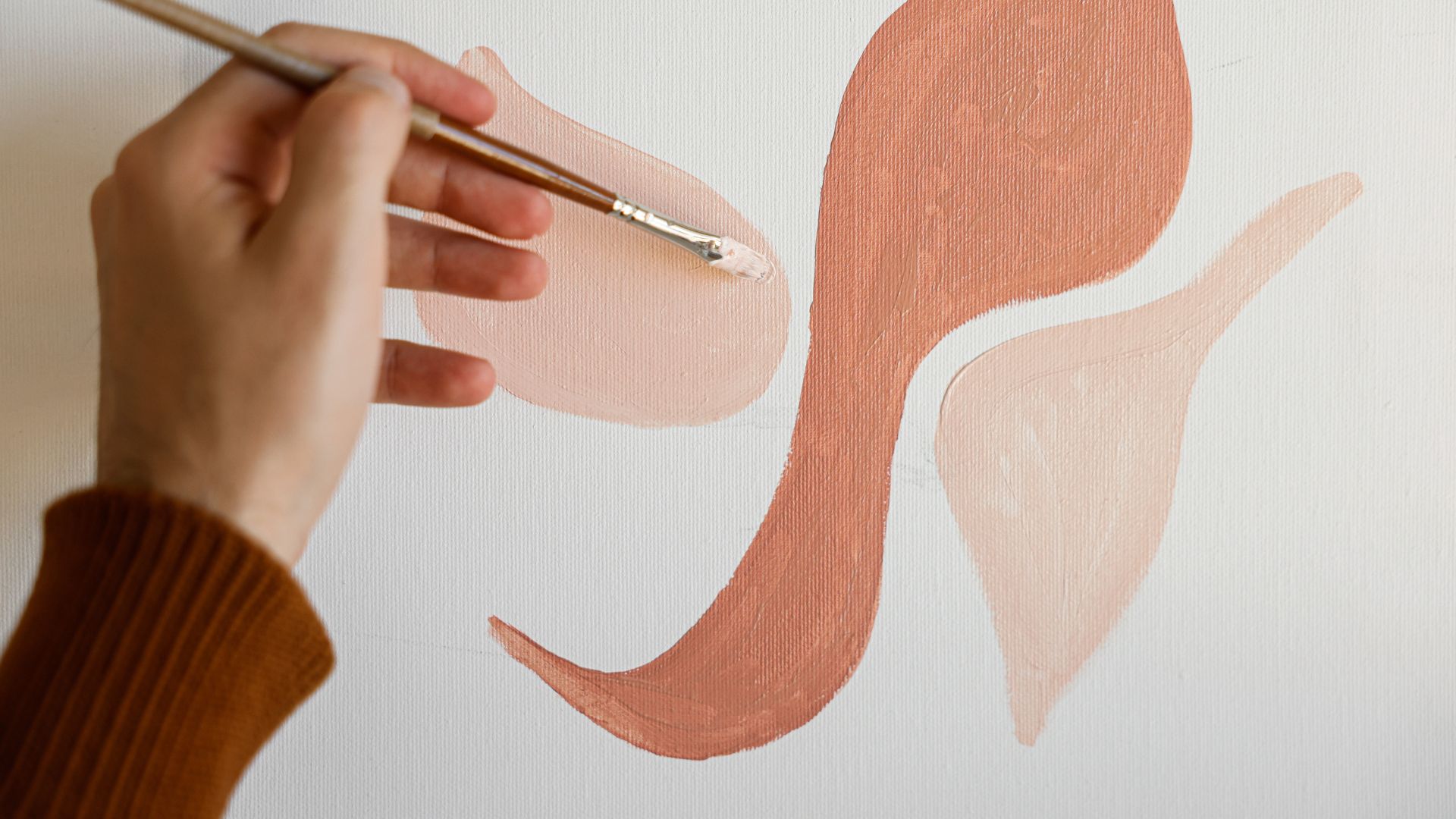The Impact of Direct Sunlight on Canvas Wall Paint:
Understanding the Vulnerability:
Canvas, while a fantastic medium for art, can be sensitive to prolonged exposure to sunlight. The paint used on canvas, particularly certain pigments, may be susceptible to fading or discoloration when consistently exposed to UV rays. This vulnerability stems from the chemical composition of the pigments and their reaction to light.
Fading and Discoloration:
Direct sunlight accelerates the process of photochemical reactions within pigments, leading to fading or alterations in color intensity. Over time, vibrant hues may gradually lose their brilliance, leaving the artwork appearing dull or altered.

Impact on Longevity:
Continuous exposure to sunlight can significantly reduce the longevity of the wall paint on canvas. The UV rays can cause not only color changes but also affect the structural integrity of the paint and canvas, potentially leading to cracking or degradation.
Preservation Techniques:
Placement and Rotation:
One effective way to protect your canvas wall paintings is by strategically placing them away from direct sunlight. Rotate your artworks periodically to ensure even exposure to the environment, preventing any single area from bearing the brunt of sunlight.
UV-Protective Coatings:
Consider applying UV-protective coatings specifically designed for artworks. These coatings act as a barrier, reducing the impact of UV rays and providing an additional layer of defense against fading and discoloration.
Frame with UV-Resistant Glass or Plexiglass:
When framing canvas wall paintings, opt for UV-resistant glass or plexiglass. These materials help filter out harmful UV rays, safeguarding the artwork without compromising its visibility.
So,….
Preserving the beauty and integrity of canvas wall paintings involves understanding the effects of direct sunlight on the applied paint. implementing strategic placement, protective coatings, and UV-resistant framing, you can prolong the life and vibrancy of your cherished artworks. Remember, preserving these treasures not only maintains their aesthetic appeal but also honors the artist’s creativity for generations to come.
External Links for Further Reference:
- Smithsonian Institution – Caring for Your Artwork
- The Getty Conservation Institute – Preventive Conservation
- National Park Service – Preserving Historic Paintings
Taking proactive steps to shield your canvas wall paintings from direct sunlight, ensure they remain captivating and vibrant for years to come.
Impact of Direct Sunlight on Canvas Wall Paint Continued:
Understanding the Role of Pigments:
Not all pigments react the same way to sunlight. Organic pigments, commonly used in artworks, are more prone to fading compared to inorganic ones. Reds, yellows, and some blues are among the hues most susceptible to fading when exposed to UV rays. Understanding the composition of the paint used in your artwork can help anticipate its vulnerability to sunlight.
Duration and Intensity of Exposure:
The extent of damage caused by sunlight depends on both the duration and intensity of exposure. Prolonged exposure to intense sunlight, especially during peak hours, can hasten the fading process. Consideration of the painting’s location and the duration of exposure to direct sunlight is crucial in preserving its quality.
Additional Preservation Measures:
Controlled Environment:
Maintaining a stable indoor environment with controlled temperature and humidity levels can aid in preserving canvas wall paintings. Fluctuations in temperature and humidity can cause expansion and contraction of the canvas, leading to cracks or warping.
Regular Maintenance:
Regularly inspect your artworks for any signs of fading, discoloration, or damage. Promptly address any concerns by adjusting the placement, applying protective coatings, or seeking professional conservation if necessary.
Conservation Consultation:
For valuable or historically significant artworks, consulting a professional conservator is advisable. Conservators possess expertise in preserving and restoring artworks, offering tailored guidance to ensure the longevity of your prized pieces.
Conclusion:
The impact of direct sunlight on canvas wall paint is a crucial consideration for art enthusiasts and collectors alike. Understanding the vulnerabilities of pigments, managing exposure duration and intensity, implementing preservation techniques, and seeking professional guidance when needed are pivotal in safeguarding these cherished artworks.
By incorporating these preservation methods into your care routine, you can continue to enjoy the beauty of your canvas wall paintings while ensuring their longevity for future generations to appreciate.
Remember, while sunlight can bring warmth and light into our spaces, it’s essential to strike a balance between enjoying natural light and preserving the integrity of precious artworks.
External Links for Further Reference:
Comparison tabular
| Aspect | Impact of Direct Sunlight | Preservation Measures |
|---|---|---|
| Vulnerability | Sensitivity of certain pigments to UV rays, leading to fading or discoloration | Understand pigment composition; avoid prolonged direct sunlight |
| Fading & Discoloration | Accelerated photochemical reactions causing color alterations | Strategic placement away from direct sunlight; rotate artworks |
| Longevity | Reduction in the lifespan of wall paint on canvas | Apply UV-protective coatings; frame with UV-resistant glass |
| Pigment Role | Organic pigments more prone to fading than inorganic ones | Understand composition for anticipated sunlight vulnerability |
| Exposure Factors | Duration and intensity of exposure impact damage | Monitor exposure duration; minimize intense sunlight exposure |
| Additional Measures | Controlled indoor environment maintenance | Maintain stable temperature/humidity; regular artwork checks |
| Conservation Consultation | Seek professional guidance for valuable or historical pieces | Consult professional conservators for tailored preservation |
Understanding these aspects and implementing corresponding preservation measures is crucial in maintaining the vibrancy and longevity of canvas wall paintings, ensuring their beauty endures despite exposure to direct sunlight.
Wrapping up
Preserving the beauty and integrity of canvas wall paintings in the face of direct sunlight requires a delicate balance between admiration and protection. By understanding the vulnerabilities of pigments, managing exposure duration and intensity, and implementing preservation techniques like strategic placement, UV-protective coatings, and professional guidance when needed, you can ensure these cherished artworks continue to captivate and inspire for generations.
Remember, while sunlight adds warmth and illumination to our spaces, it’s essential to take proactive steps to shield these valuable pieces from its potentially damaging effects. Through a blend of care, awareness, and preservation, you can enjoy the timeless allure of your canvas wall paintings for years to come.
Preserving art isn’t just about safeguarding a painting; it’s about honoring creativity, history, and the stories these artworks convey. By investing in their protection, you’re ensuring that these visual narratives endure and remain as captivating as the day they were created.

For over a decade, I’ve been Mike, an artist, crafter, and designer deeply immersed in the Croc world. I thrive on crafting unique, size-inclusive patterns, fostering creativity, and sharing them on ktforum.com. My designs aim to ignite your creative spark and delight you, ensuring clarity and ease of use through rigorous testing. Join me in expressing your creative flair and showcasing your craft with joy.
Related Posts
- Will Wall Paint Cause Canvas Stretching or Warping? Debunking Myths and Ensuring Art Preservation
When it comes to showcasing art on canvas, concerns about how wall paint might affect…
- Can You Paint Over Existing Wall Paint on Canvas
If you're an aspiring artist or someone enthusiastic about trying their hand at painting, you…
- Ensuring Longevity: Wall Paint on Canvas
When it comes to painting, the canvas serves as an artist's playground, a surface that…
- Exploring Temporary Art with Wall Paint on Canvas
When it comes to art, experimentation knows no bounds. Have you ever considered using wall…

